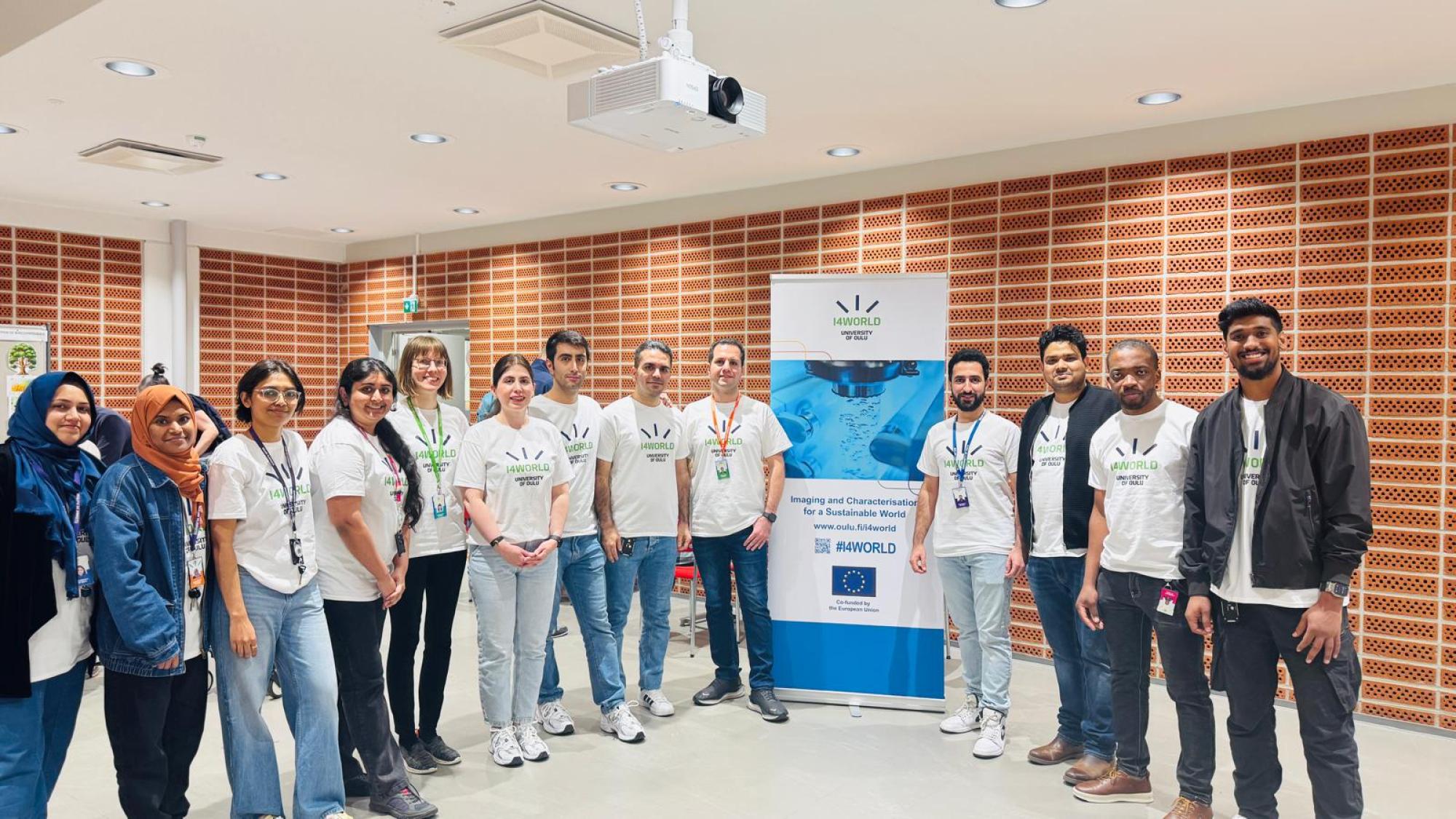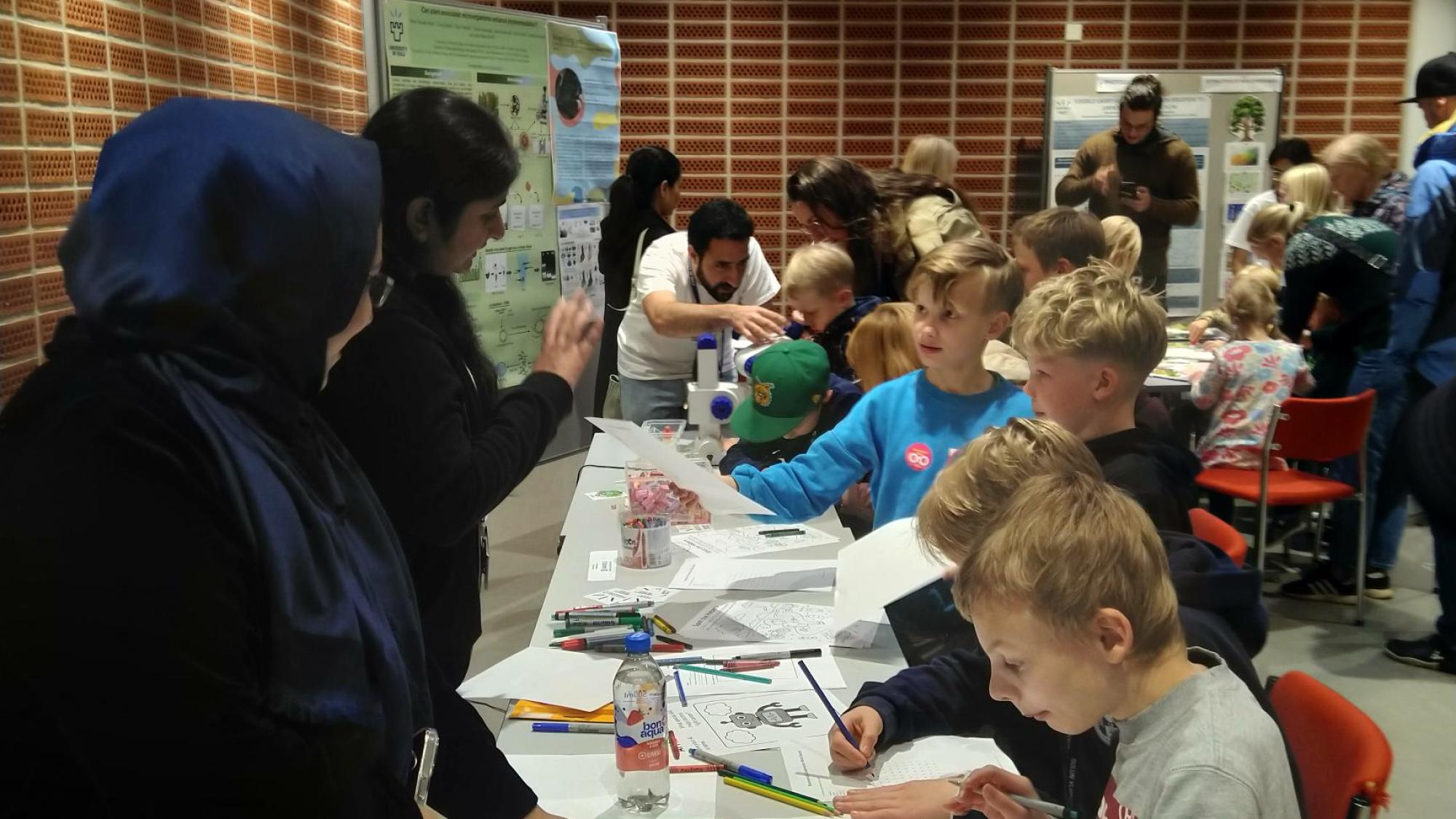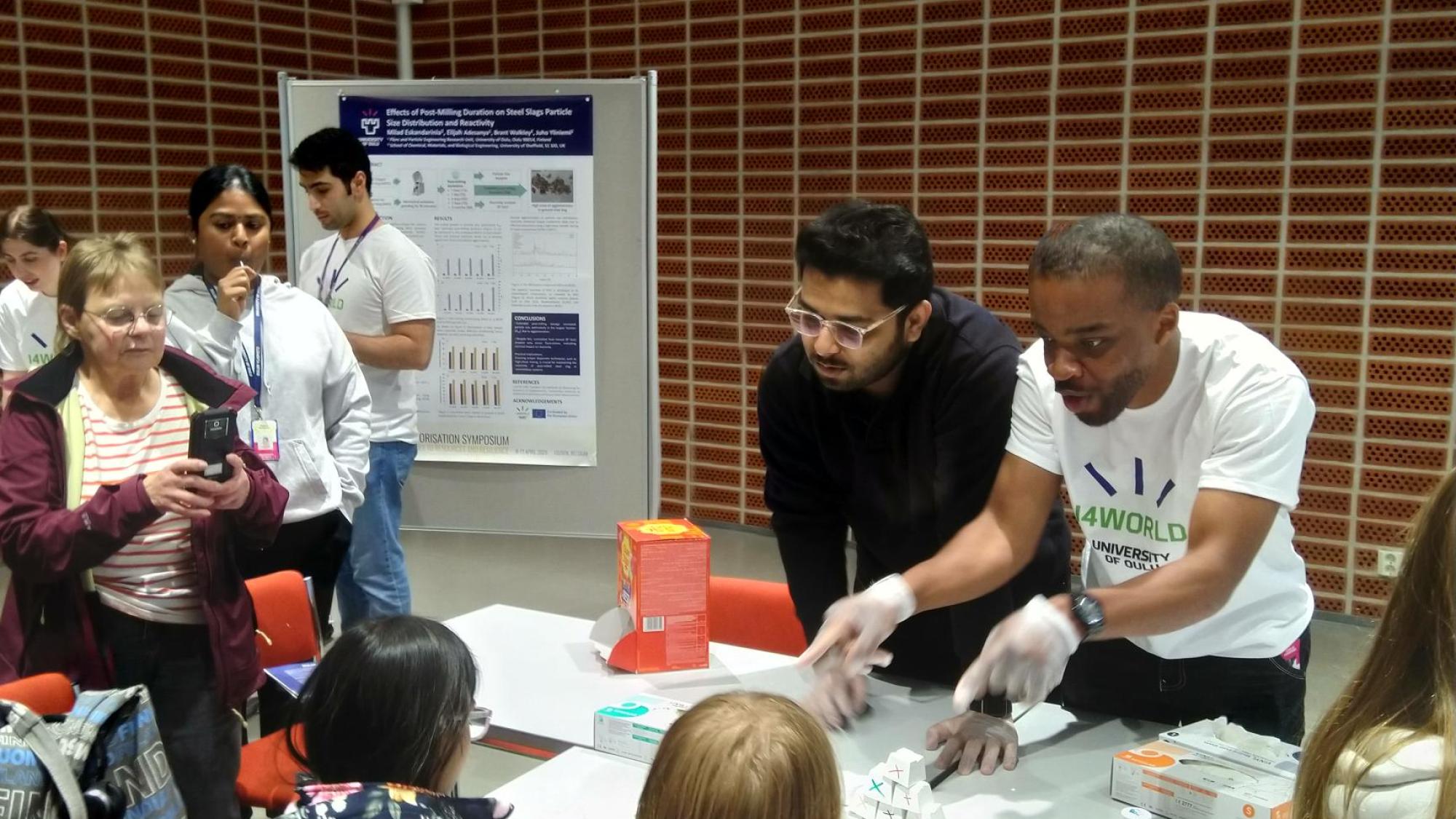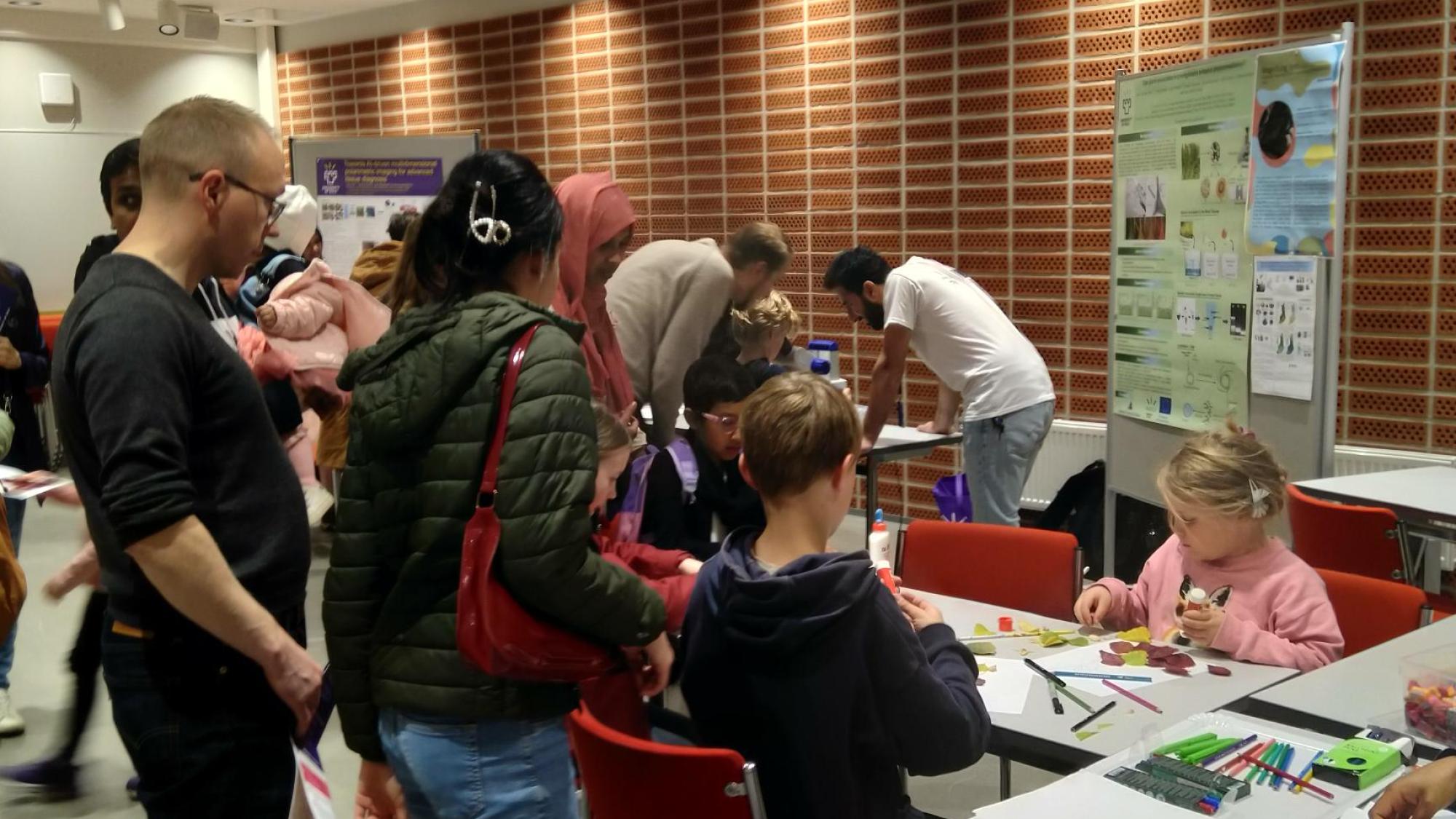I4WORLD at Researchers' Night 2025

Science was showcased in I4WORLD workshop, including 15 researchers, demonstrating how they are working together to build a sustainable future through research by using diverse methods of imaging and characterization. Researchers and their topics at the workshop included the following:
Shreya Pandey and Ifra Arif showed how AI supports both biodiversity studies and cancer research. Fun science puzzles and an AI-mascot design activity were included.
Abrar Mian showcased how moss and microbes can capture metals like copper and nickel from mining-impacted water. Visitors used a microscope to see aquatic moss and its friendly fungal partners in action.
Rizwana Ajamavad highlighted how green chemistry can contribute to more sustainable agriculture. In addition to the presentation, a fun interactive quiz was included—complete with candies for participants of course!
Rachana Yadav connected her research on the extraction of bioactive compounds from tree with practical crafting by hosting an imaginative and nature-inspired activity for kids. Organic materials like vibrant autumn leaves and pistachio shells were used by the kids in their artwork.
Hamed Derakhshandeh and Mohan Rangaswamy presented the concept of Nuclear Magnetic Resonance (NMR) by using simple, engaging language, focusing on NMR imaging (MRI). Presentation included a fun, child-friendly story explaining how MRI works, along with real MRI images of a tomato (MR Images provided by Dr. Katja Tolkinen). Children had also opportunity to color drawings inspired by the story.
Alireza Soleimanian presented in his “From Glass Straw to Tiny Door”, how a glass tube thinner than a hair works like a molecular fingerprint scanner, reading single DNA and protein molecules to enable disease detection.
Julson Tchio Shreenandan Sahoo, Nikhil Rathod, Faysal Hossain, Milad Eskandarinia, Mina Esmailzade Anzabi – Showcased what alternative cement binders are in fun and interactive way. They created LEGO-style blocks marked with different colors. The kids used them to play a pyramid-building game in friendly competition and had opportunity to paint and decorate small cement blocks in various shapes.

Here are some researchers’ experiences reflecting that the event was a a great way to connect with people of all ages:
It was exciting to share how AI benefits health and the environment while watching children light up as they discovered tiny details in plants.
Numerous kids eagerly took part, making imaginative and distinctive crafts. Seeing their enthusiasm and interest warmed my heart. Additionally, I had the chance to interact with adults who wanted to know how my research related to the natural materials used in the activity.
Seeing their excitement and creativity reminded me of the importance of making science accessible and enjoyable. It was a powerful reminder that even complex topics can be made simple and inspiring especially for the next generation of thinkers and builders.
The curiosity was fantastic. Kids asked if molecules “queue nicely,” parents connected with the airport-scanner analogy, and academic visitors discussed quartz nanopipettes and ionic-current traces. It was a great reminder that complex sensing can be made tangible and exciting for everyone.
Kids enjoyed “feeding” the moss with safe demo solutions, while adults asked about scaling and reuse. My favorite moment was a 7-year-old telling her dad, “The fungus is the moss’s helper.”

